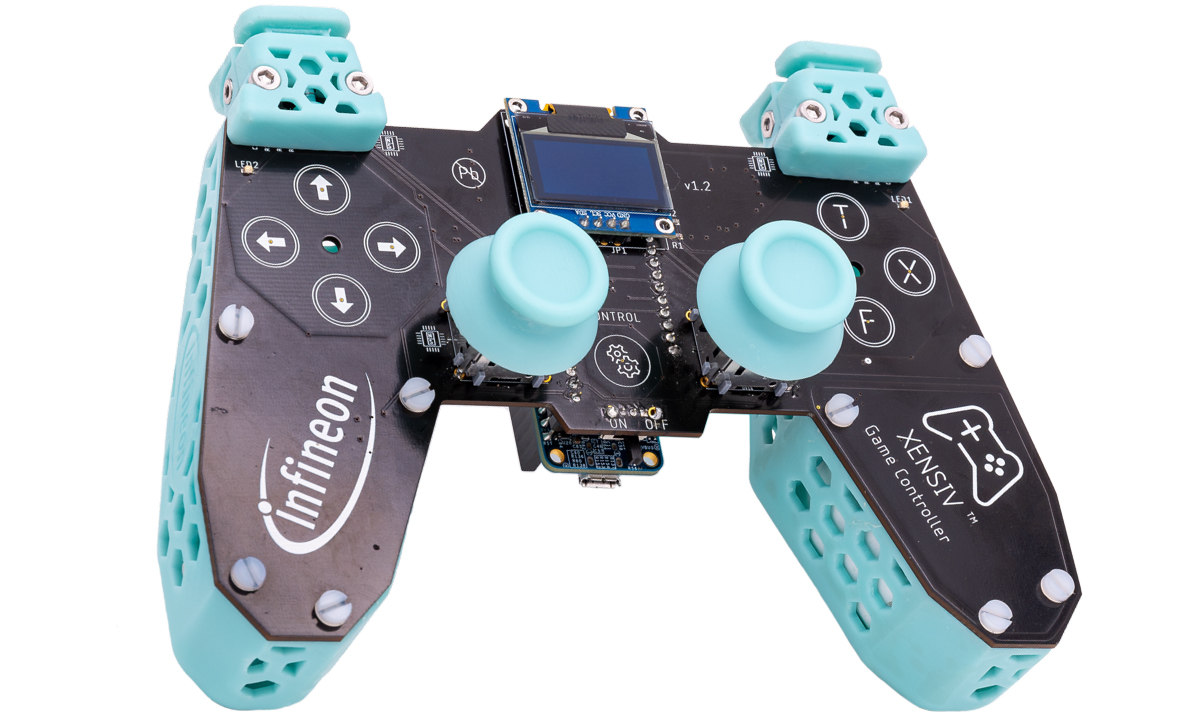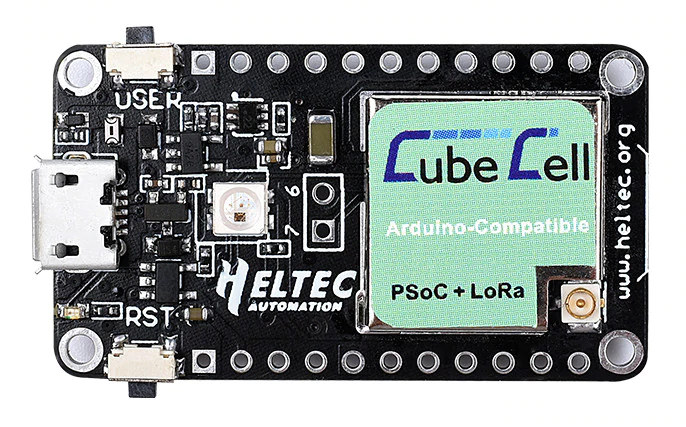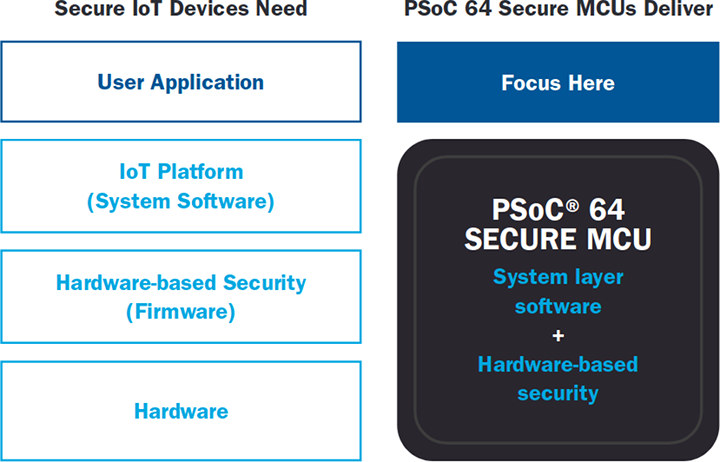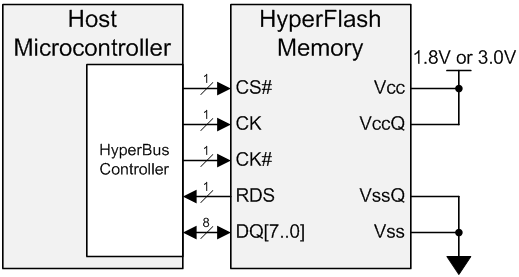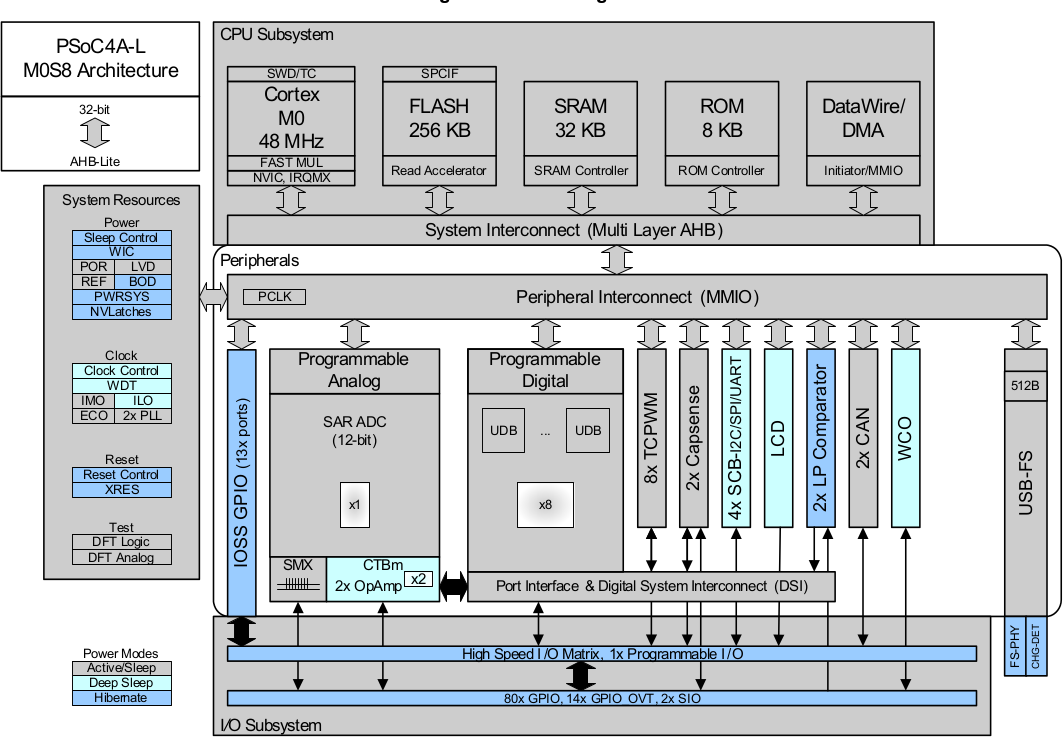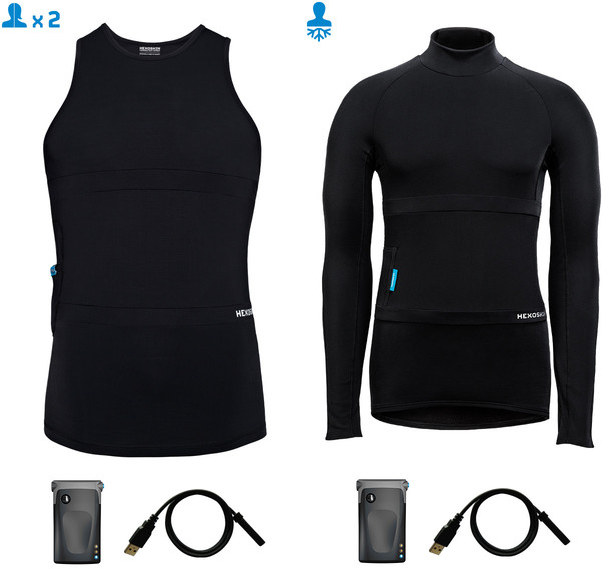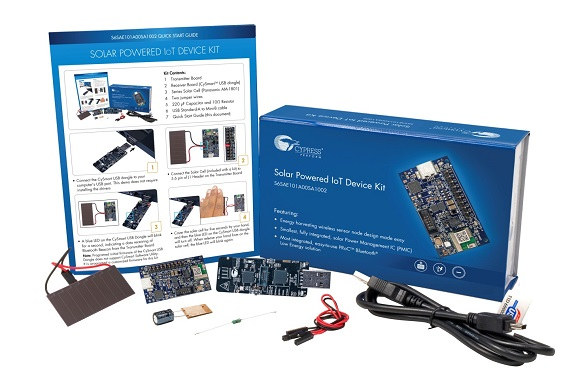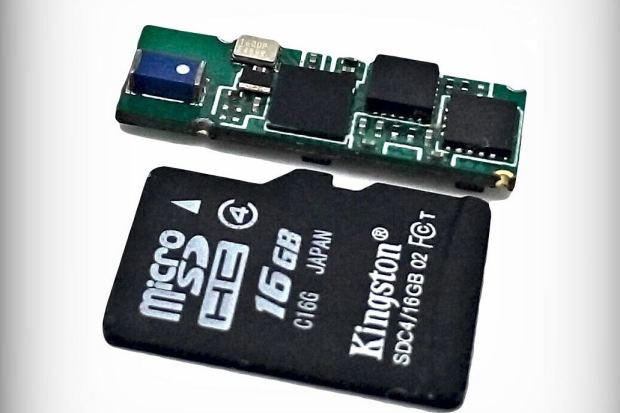Infineon Technologies XENSIV game controller is a reference design that integrates XENSIV magnetic position sensors for precise joystick control without sensor drift and XENSIV Hall switch triggers for reliable operation. The controller also features capacitive CAPSENSE buttons, CAPSENSE presence detection, and a SPIDER+ rumble driver. These components work together with the PSoC 6 BLE microcontroller to create a low-power, plug-and-play solution. The onboard display allows users to monitor joystick movements, connection status, configurations, and battery information. The controller connects to PCs or smartphones as a USB human interface device (HID) without requiring manual configuration or driver installation. It also supports Bluetooth Low Energy and uses capacitive presence detection to optimize battery life. The design includes a PSoC 6 debugger and supports customizable shields providing flexibility for software and hardware integration. Previously, we covered an Arduino Nano Matter-powered game controller that successfully ported Quake, a popular first-person shooter game. We’ve also […]
$10 HelTec CubeCell LoRa Board Features Cypress PSoC 4 MCU
HelTec CubeCell is an Arduino-compatible LoRa module based on Semtech SX1262 transceiver and a Cypress PSoC 4 mixed-signal MCU. The module itself currently sells for $6.90, but you’ll also find a more convenient board for $9.90, as well as a $13.90 IP67 “capsule” housing a battery, an antenna, and a sensor board. All three are available on the same Aliexpress page. CubeCell LoRa board specifications: SoC – ASR Microelectronics ASR6501 with MCU – Cypress PSoC 4 Arm Cortex-M0+ @ 48 MHz with 128KB flash, 16KB SRAM LoRa Transceiver – Semtech SX1262 LoRa Connectivity Bands – EU433, CN470-510, EU863-870, US920-928 Output Power – 21 dB +/- 1 dB max LoRaWAN standard protocol support USB – 1x Micro USB port for power and programming Expansion – 2x 11-pin headers with GPIO’s, UART, I2C, SPI, ADC, Reset, and VIN, 5V, 3.3V, and GND power signals Misc – User and boot buttons, RGB LED […]
Cypress PSoC 64 Microcontrollers Target Secure IoT Applications
If you are like me, you probably don’t remember, but back in 2017 Arm announced the Platform Security Architecture (PSA) that defines a set of requirements to secure low cost Internet of Things devices. There’s now at least one PSA compliant microcontroller, as Cypress Semiconductor introduced their PSoC 64 Secure MCU at Embedded World 2019 last month. The press release claims that PSoC 64 MCU family is one of “the first Arm Cortex-M processors to be certified as Level 1 compliant within the Arm Platform Security Architecture (PSA) certification scheme, PSA Certified, utilizing a secure Trusted Firmware-M (TF-M) implementation integrated into the Arm Mbed OS open-source embedded operating system”. PSoC 64 secure MCU key features and specifications: Arm Cortex-M4F core with 22‑µA/MHz active power consumption Optional Arm Cortex-M0+ core with 15‑µA/MHz power consumption System Memory – 160KB to 1MB SRAM Storage – 512KB to 2MB flash Security HW Cryptography – […]
Octo SPI / HyperBus Interface is Designed for High Speed Serial Flash, RAM, and MCP
So far, if you needed high speed storage with low pin count in your MCU based board, you could use QSPI (Quad SPI) NOR flash, but earlier this month I wrote about STM32L4+ MCU family, which added two Octo SPI interfaces. I had never heard about Octo SPI previously. Those two interfaces can be used with single, dual, quad, or octal SPI compatible serial flash or RAM, and support a frequency of up to 86 MHz for Octal SPI memories in STM32L4+ MCU. STMicro OctoSPI interface also supports Cypress/Spansion Hyperbus mode to connect to HyperFlash or HyperRAM chip, or even HyperFlash + HyperRAM Multi-Chip packages (MCP), and variable or fixed external memory latency as defined by the Hyperbus protocol specification. The latter reveals Hyperbus supports performance up to 400 MB/s (provided the controller support 200 MHz), and relies on either 11 bus signals using 3.0V I/O (Single-ended clock CK), or […]
Cypress Introduces PSoC 4 L-Series ARM Cortex-M0 MCU and Development Kit
Cypress Semiconductor has recently unveiled PSoC 4 L-Series micro-controller family based on ARM Cortex M0 core with more programmable analog and digital blocks, expanded memory, new peripherals and higher number of I/Os, as well as the corresponding Arduino compatible CY8CKIT-046 PSoC 4 L-Series Pioneer Kit to evaluate their latest solution. Key features of PSoC 4 L-Series MCU ARM Cortex-M0 CPU @ 48-MHz with DMA controller, up to 256KB flash, up to 32KB SRAM and up to 98 GPIOs CapSense with SmartSense auto-tunning – 2x Cypress Capacitive Sigma-Delta (CSD) blocks Programmable analog 4x configurable opamps 4x current DACs (IDACs) 2x low-power comparators (CMP) One 12-bit, 1-Msps SAR ADC Programmable digital 8x Universal Digital Blocks (UDBs) 8x configurable 16-bit TCPWM 4x independent serial communication blocks (SCBs) Full-Speed USB 2.0 controller 2x CAN Controllers Segment LCD Drive support up to a maximum of 64 output (commons or segments) Power 1.71 to 5.5 V […]
Hexoskin Smart T-Shirt Keep Tracks of Your Activity with 42,000 Data Points per Minute (Crowdfunding)
There are now many smartwatches with electro-optic hear rate monitors, but based on my short experience so far, if you want something accurate and reliable, you’d still better use a chest trap. Another potentially more comfortable option would be to use Hexoskin Smart T-shirt, and on top of the usual fitness data (step count, calorie burn, distance and heart rate), also measure your breathing rate and volume. The T-shirt also supports Bluetooth Smart to send back all the data to your smartphone or other devices such as bike computers or smart watches. The company already has Bluetooth Classic T-Shirt, but there latest versions will offer longer battery life and Bluetooth 4.2 LE connectivity. Hexoskin T-shirt 2016 specifications: Bluetooth Smart 4.1 connectivity via Cypress EZ-BLE PRoC module Heart rate, RR intervals, fatigue and stress indicator (Heart Rate Variability). Breathing rate and breathing volume. Activity intensity, peak acceleration, steps and cadence. Analog 256Hz […]
Cypress Unveils a $49 Solar Powered IoT Development Kit with Bluetooth LE Connectivity
Cypress Semiconductors has recently launched a Solar powered IoT device kit, with the easy-to-remember codename S6SAE101A00SA1002, featuring the company’s CYBLE-022001-00 Bluetooth Smart module, and S6AE101A energy harvesting power management IC (PMIC) on the main board, as well as all accessories such as a small solar panel, a BLE-USB bridge, and all necessary components and cables. Target applications include battery-less wireless sensor node (WSN), IoT device that monitors various sensors, BLE Beacon, wearable device, building energy management system (BEMS), Home EMS, Factory EMSystem, wireless lighting control,wireless HVAC sensor and security system. The main features of the Energy harvesting motherboard include: Cypress CYBLE-022001-00 Bluetooth Smart module with ARM Cortex-M0 @ 48MHz, 128 KB flash, 16KB SRAM Cypress S6AE101A energy harvesting PMIC Sensor – Temperature & humidity sensor USB – 1x USB port for programming and debugging Debugging – SWD (serial Wire Debug) connector, JTAG header for USB-BLE Expansion – Sensor expansion connector […]
XBAND is a Tiny $10 Bluetooth Low Energy Sensor Module (Crowdfunding)
ZX Tek‘s XBAND is a board about half the size of a micro SD that comes with a Bluetooth LE radio and a 6-axis MPU6500 motion sensor that can be integrated into wearables and IoT applications such as a remote controlled robot with a camera., a wireless smart light-bulb, and iBeacon device and so on. There seems to be two versions of the module XBAND 061-N51822 and XBAND 1018-CY8C4247 with the following specifications: SoC (one or the other) Nordic Semiconductor nRF51822 ARM Cortex M0 MCU @ 16 MHz with 256KB Flash, 16KB RAM, and Bluetooth Low Energy support Cypress PSoC4 BLE core ARM Cortex M0 MCU @ 48 MHz with 128KB flash, 16KB RAM, and Bleutooth Low Energy support Bluetooth – 4.0/4.1 with high gain ceramic chip antenna Sensors – On-board 6-axis MPU6500 motion sensor + an extra configurable sensor (not idea what that is…). Connectors – Board-to-board connectors with […]


